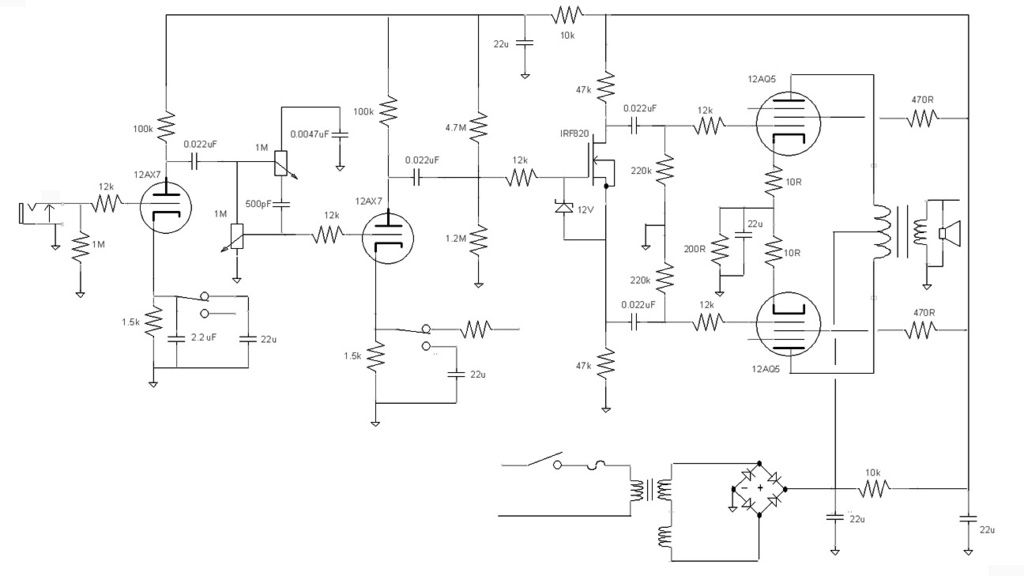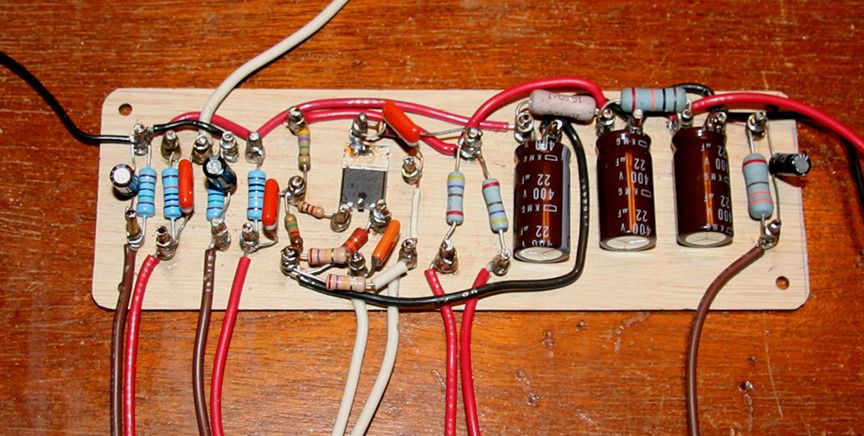I'm thinking of making a small amp for home/recording using an ecc99 for the output tube. I'm limited by what I have in my junk pile which leaves me with looking at the following topology using two 12ax7s and an ecc99:
Input > 1st stage > gain pot > 2nd stage > CF > FMV tone stack > cathodyne PI > ecc99 power amp.
My concern is that there might not be enough swing left after the TS to get enough out of the cathodyne to drive the ecc99 so I may have to rethink things. Should I really be looking at using a recovery stage before the cathodyne as is typically found? If so I may use a mosfet source follower in place of the CF to free up a triode for this purpose. I'm not against using a mosfet but if I can use the CF I'd prefer that as I'd like to play around with the cathode load resistor value to dial in the right amount of compression which I guess doesn't work using a mosfet.
Thoughts?
Input > 1st stage > gain pot > 2nd stage > CF > FMV tone stack > cathodyne PI > ecc99 power amp.
My concern is that there might not be enough swing left after the TS to get enough out of the cathodyne to drive the ecc99 so I may have to rethink things. Should I really be looking at using a recovery stage before the cathodyne as is typically found? If so I may use a mosfet source follower in place of the CF to free up a triode for this purpose. I'm not against using a mosfet but if I can use the CF I'd prefer that as I'd like to play around with the cathode load resistor value to dial in the right amount of compression which I guess doesn't work using a mosfet.
Thoughts?



Comment